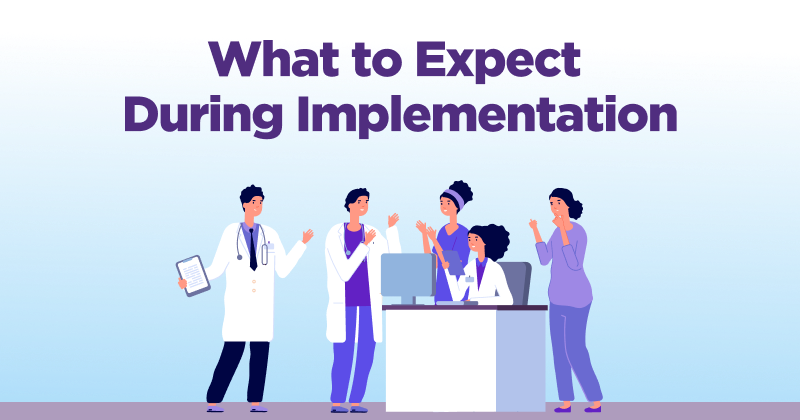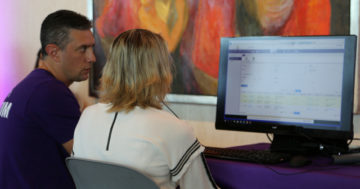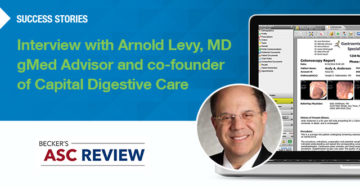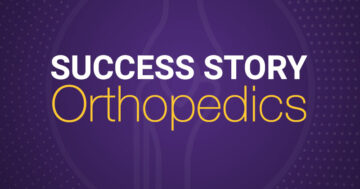EHR Implementation Checklist: What It’s Like to Switch to ModMed

EHR implementation may be easier than you expect with support from ModMed®
Published on May 12, 2023
By: Sierra Pete
For physicians considering switching EHRs, ModMed offers a clear implementation path, so your practice can plan, prepare and deploy effectively. During each implementation phase, you’ll receive guidance and support that includes extensive interaction with ModMed onboarding staff.
While each practice’s implementation may vary by specialty, complexity and individual needs, you can expect our team to support you as you move continuously from one step to the next.
Our goal is to deliver efficiency, whether you’re implementing or using our software.
Discover how ModMed can help you switch EHRs with minimal interruption to your practice. Book a demo now.
Adoption
Planning and Discovery
Once you select ModMed as your new EHR, we start partnering with you to help adopt our solutions into your practice. We do this through thorough practice assessments, discovery and action planning.
In this stage, you’ll work closely with our onboarding personnel, who guide you and answer questions, allowing you to focus on what matters most: practice efficiencies and your patients.
We take time to learn your practice and understand your expectations. Some of what we review includes your key performance indicators (KPIs) and creation of benchmarks for alignment with your individualized implementation action plan.
Technical Integrations
Your legacy system may require some form of technical integration. Examples of this may include demographic and insurance migration, clinical data conversion or appointment conversion, to name a few. We work to accomplish these implementation dependencies swiftly by leveraging our external technical partners.
This step may take varying amounts of time, depending on your practice’s needs. For example, a large practice with many physicians, multiple specialties, cross-functional staff and high demand for interoperability may need to plan more time for this stage than a smaller practice with a single specialty. If you need to digitize records or merge documentation, our data conversion tools facilitate records transfer.
Configuration and Training
In this phase, you can expect to start working through your individualized implementation plan alongside ModMed onboarding personnel. Our EHRs are built for physicians by physicians and are designed with intuitive workflows, which we’ll configure to reflect your practice’s needs, objectives and goals.
As you enter into the configuration and training phases of implementation, we start working exclusively with physicians, practice managers, administrators, billing managers and support staff to customize and fine-tune workflows that are applicable to specific roles.
This helps us keep your team engaged and committed to learning and practicing within the platform before we go live. ModMed provides ample time for you to configure behind the scenes, so your team can work out what settings are ideal.
Configuring Your Settings
During the configuration stage, there may be slight variances depending on each practice’s needs. ModMed shows you how to set up protocols, add consent forms, edit your review of systems, enter legacy insurance payers and customize your inventory systems, if applicable, as well as your patient engagement communication methods.
User Training
As we move into end-user training, we work through core training and reviewing initial software introductions. This includes common workflows and technical skills that may be new to your staff. Then, we focus on the application of new skill sets in a controlled environment to help ensure comfortable adoption and help oversee the change management process alongside your team. You can expect training to include users across varying roles.
Go-Live
After we’ve finished training, we deploy your system in your practice on a specified date. This is often referred to as your official “go-live.” ModMed support staff can join you on site or support you virtually for this part of the process. Our goal is to surround your practice with appropriate levels of support to ensure you are smoothly transitioned onto our specialty-specific platform.
Optimization
During our optimization phase, you and your team will begin to experience the power and efficiency of ModMed in your everyday working scenarios.
As everyone starts using your new EHR, it’s natural for staff to make note of questions or discover more about their needs. You can expect ModMed to follow up after go-live to continue to fine-tune workflows with your staff. This allows your staff to settle into the platform in real time and allows ModMed personnel to address specific concerns that may arise. As a ModMed client, you have the flexibility to engage in optimization in person or remotely.
Extended Support
As you become a confident ModMed user, we will continue to partner with you for the long haul. We offer continuous training and staff support as you gain familiarity and confidence with your new EHR.
How to Get Started
If you’re interested in learning more about how to switch EHRs, ModMed can help you from start to finish with our award-winning* EMA and gGastro EHR solutions.
With support from our staff, you may find implementation is easier than you expected, allowing your staff to transition away from systems that no longer serve your needs or allow your practice to grow. We’re committed to your success and can help customize an implementation plan for your practice now.
Ready to get started? Book a demo.
About Sierra Pete
Senior Implementation and Training Solution Engineer Sierra Pete has held multiple positions at ModMed, including Certified MIPS advisor, Senior Client Advisor and Project Manager. Sierra has over a decade of experience in healthcare administration and management.
Prior to her time at ModMed, Sierra held other positions related to finance, healthcare, compliance and administration. She was an urgent care site manager at a large hospital in South Florida, a senior quality assurance analyst, and assistant risk manager at a healthcare facility. She holds an associates degree in nursing, a bachelor’s degree in healthcare administration, and is actively pursuing a masters in contractual risk management business law.
*2023 Black Book™
This blog is intended for informational purposes only and does not constitute legal or medical advice. Please consult with your legal counsel and other qualified advisors to ensure compliance with applicable laws, regulations and standards.







